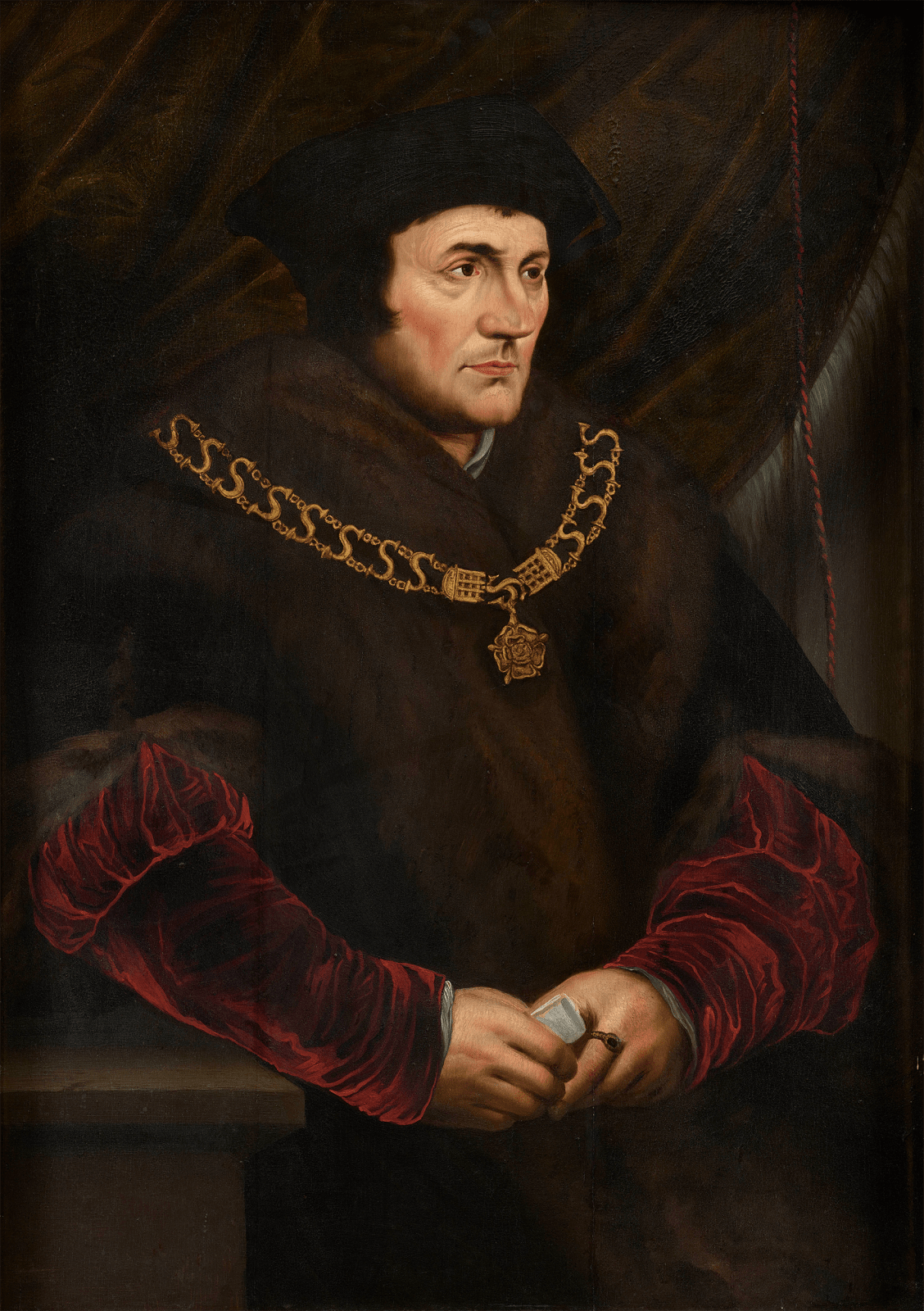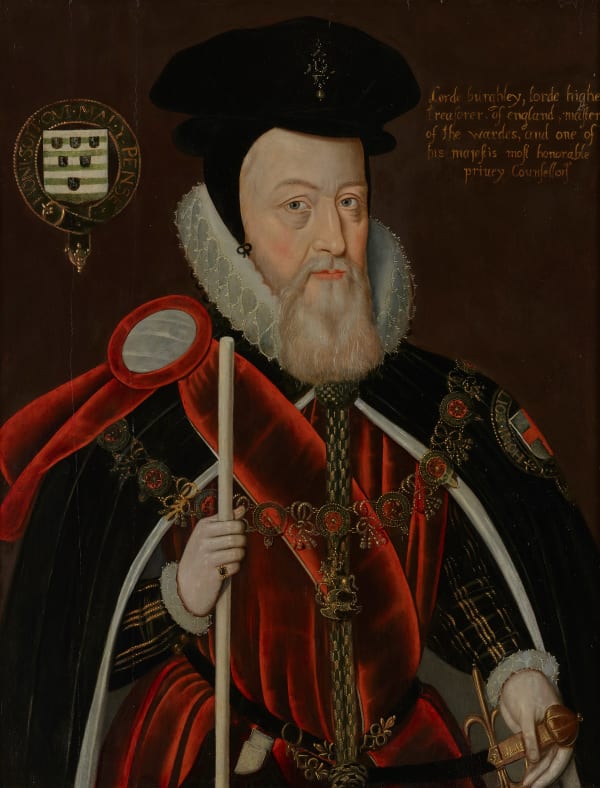
Flemish School, After Hans Holbein
Portrait of Sir Thomas More, c. 1630
Oil on oak panel
35 ½ x 27 in. (91 x 56.4 cm)
Bears a panel maker’s mark verso (Guilliam Gabron active 1609 – after 1662) and the stamp of the city of Antwerp
Philip Mould & Co.
%3Cdiv%20class%3D%22artist%22%3EFlemish%20School%2C%20After%20Hans%20Holbein%3C/div%3E%3Cdiv%20class%3D%22title_and_year%22%3E%3Cspan%20class%3D%22title_and_year_title%22%3EPortrait%20of%20Sir%20Thomas%20More%3C/span%3E%2C%20%3Cspan%20class%3D%22title_and_year_year%22%3Ec.%201630%3C/span%3E%3C/div%3E%3Cdiv%20class%3D%22medium%22%3EOil%20on%20oak%20panel%3C/div%3E%3Cdiv%20class%3D%22dimensions%22%3E35%20%C2%BD%20x%2027%20in.%20%2891%20x%2056.4%20cm%29%3C/div%3E%3Cdiv%20class%3D%22signed_and_dated%22%3EBears%20a%20panel%20maker%E2%80%99s%20mark%20verso%20%28Guilliam%20Gabron%20active%201609%20%E2%80%93%20after%201662%29%20and%20the%20stamp%20of%20the%20city%20of%20Antwerp%3C/div%3E
To view all current artworks for sale visit philipmould.com Bears a panel maker’s mark verso (Guilliam Gabron active 1609 – after 1662) and the stamp of the city of Antwerp...
To view all current artworks for sale visit philipmould.com
Bears a panel maker’s mark verso (Guilliam Gabron active 1609 – after 1662) and the stamp of the city of Antwerp
This rich interpretation of one of Holbein’s greatest portraits was painted in Antwerp in the first decades of the seventeenth century. Counter-Reformation thinkers had great interest in More and his martyrdom, and the painting should be seen as a visual accompaniment to works such as Cresacre’s 1631 Life and Death of Thomas More published at Douai or Domenico Regi’s Delle Vita di Tommaso Moro printed at Milan in 1675.
Several versions of Holbein’s portrait are known, of which three have a good claim to be contemporary or nearly contemporary with the original portrait now in the Frick Collection, New York, and two have long English provenances. Neither of these is likely to have been the source for this version executed in Catholic Antwerp, and there seems little reason to doubt that the primary source was the Frick painting which in the seventeenth century was in Rome in the collection of Cardinal Pier Paolo Crescenzi (1572 – 1645), whence the Earl of Arundel tried in vain to extract it in the 1630s. This was most probably the portrait which then passed to the Catholic convert and devote Queen Cristina of Sweden, from whom the descent is known to Henry Clay Frick in 1912.
Perhaps as a consequence of its more bluntly propagandist purpose, the comparatively mild and handsome features of the Holbein original have in the present portrait been more deeply etched into the face, and the calm, intelligent air of the courtier-intellectual has been transformed into that of a man on the path to martyrdom. In technique the present picture is also an interesting interpretation of the original, and the deeper, redder flesh tones of the Flemish seventeenth century school, with its distinctive bold brushwork, have replaced the smoother execution of the Frick painting. The composition has also been extended downwards and reduced very slightly at the left side. The panel has not undergone any alteration, and it seems probable that these deliberate changes were introduced to conform the standard size of the Antwerp-made panel.
The size of this panel is of interest, since it is very close to the English ‘Kit-Cat’ of 36 x 28 inches, introduced to British painting by Sir Godfrey Kneller in the 1690s. It has long been suggested that the roots of this dimension lie in Dutch painting – an approximation of the size was used by Rembrandt – and the present panel confirms that Kneller was most probably following a practice of the Low Countries, either in emulation of his putative master Rembrandt, or of the Rubens School of Antwerp, whose painterly technique he was also exploring by the late 1690s.
Bears a panel maker’s mark verso (Guilliam Gabron active 1609 – after 1662) and the stamp of the city of Antwerp
This rich interpretation of one of Holbein’s greatest portraits was painted in Antwerp in the first decades of the seventeenth century. Counter-Reformation thinkers had great interest in More and his martyrdom, and the painting should be seen as a visual accompaniment to works such as Cresacre’s 1631 Life and Death of Thomas More published at Douai or Domenico Regi’s Delle Vita di Tommaso Moro printed at Milan in 1675.
Several versions of Holbein’s portrait are known, of which three have a good claim to be contemporary or nearly contemporary with the original portrait now in the Frick Collection, New York, and two have long English provenances. Neither of these is likely to have been the source for this version executed in Catholic Antwerp, and there seems little reason to doubt that the primary source was the Frick painting which in the seventeenth century was in Rome in the collection of Cardinal Pier Paolo Crescenzi (1572 – 1645), whence the Earl of Arundel tried in vain to extract it in the 1630s. This was most probably the portrait which then passed to the Catholic convert and devote Queen Cristina of Sweden, from whom the descent is known to Henry Clay Frick in 1912.
Perhaps as a consequence of its more bluntly propagandist purpose, the comparatively mild and handsome features of the Holbein original have in the present portrait been more deeply etched into the face, and the calm, intelligent air of the courtier-intellectual has been transformed into that of a man on the path to martyrdom. In technique the present picture is also an interesting interpretation of the original, and the deeper, redder flesh tones of the Flemish seventeenth century school, with its distinctive bold brushwork, have replaced the smoother execution of the Frick painting. The composition has also been extended downwards and reduced very slightly at the left side. The panel has not undergone any alteration, and it seems probable that these deliberate changes were introduced to conform the standard size of the Antwerp-made panel.
The size of this panel is of interest, since it is very close to the English ‘Kit-Cat’ of 36 x 28 inches, introduced to British painting by Sir Godfrey Kneller in the 1690s. It has long been suggested that the roots of this dimension lie in Dutch painting – an approximation of the size was used by Rembrandt – and the present panel confirms that Kneller was most probably following a practice of the Low Countries, either in emulation of his putative master Rembrandt, or of the Rubens School of Antwerp, whose painterly technique he was also exploring by the late 1690s.
Provenance
A European Nobleman;Philip Mould & Co., 2004;
Private collection, UK.
Share
- X
- Tumblr
